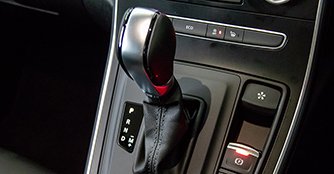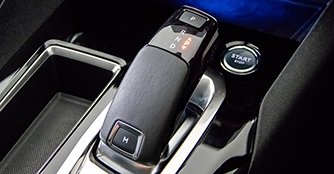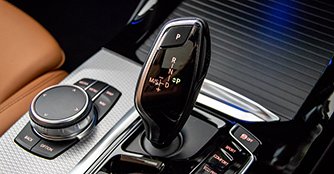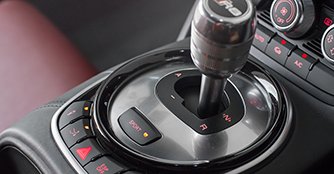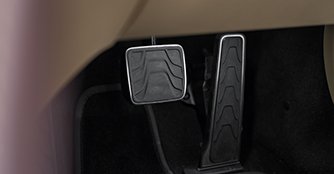Tips on properly maintaining an automatic transmission
21 Mar 2011|100,086 views
These days, automatic transmissions are everywhere. Most drivers choose an automatic transmission over a manual because of the convenience it affords. But does that mean that transmission gearboxes require little attention and care?
That’s far from true. In fact, the automatic transmission is one of the most complicated and thus one of the less reliable parts of the vehicle. The repair of an automatic transmission is complex, and this means it tends to be quite expensive as well. More than that, automatic transmission problems can make your car unsafe - some transmission defects may cause your car to roll even with the shifter in Park or drive forward with the shifter in Neutral.
However, your car's automatic transmission can last for a long tie if it is well taken care of. Therefore, it is important to learn about maintenance tips for your transmission as well as ways to spot any minor problems before major issues crop up, which may even result in the total breakdown of your vehicle.
What often damages automatic transmission?
Transmission complications often occur due to overheating. This is so because at a high temperatures, losing its lubricating qualities and becomes oxidized, leaving deposits all over inside the transmission. When exposed to the heat, the rubber seals and gaskets inside the transmission hardens, which will cause leaks. The metal parts warp and lose their strength. All this, sooner or later, results in transmission failure.
The cause of overheating here in Singapore can be due to a couple of things - insufficient coolant in the system, a defective water pump or a dirty and restricted radiator grille - so it's important to ensure you car is regularly and properly serviced. And with the extreme weather in Singapore, often slamming on the accelerator pedal isn't going to help. Revving up your engine rpm is something you should try and avoid as often as possible as it generates excessive amounts of heat.
Is overheating the one and only reason for damage?
No, it's not. There are times damage to transmission is caused by poor manufacturer design, lack of care, or repairs performed by untrained or inexperienced technicians.
So what should you do to avoid the damage?
1. Watch out for leakage
You should always check for any leakage under the car. Even though it is not necessarily leakage of the transmission fluid, you should consult a professionally trained technicians if you happen to discover any kind of leakage. It might point to anther problem with your vehicle. Keep in mind that any kind of leakage could be critical and endanger your life, as well as the lives of your passengers.
That’s far from true. In fact, the automatic transmission is one of the most complicated and thus one of the less reliable parts of the vehicle. The repair of an automatic transmission is complex, and this means it tends to be quite expensive as well. More than that, automatic transmission problems can make your car unsafe - some transmission defects may cause your car to roll even with the shifter in Park or drive forward with the shifter in Neutral.
However, your car's automatic transmission can last for a long tie if it is well taken care of. Therefore, it is important to learn about maintenance tips for your transmission as well as ways to spot any minor problems before major issues crop up, which may even result in the total breakdown of your vehicle.
What often damages automatic transmission?
Transmission complications often occur due to overheating. This is so because at a high temperatures, losing its lubricating qualities and becomes oxidized, leaving deposits all over inside the transmission. When exposed to the heat, the rubber seals and gaskets inside the transmission hardens, which will cause leaks. The metal parts warp and lose their strength. All this, sooner or later, results in transmission failure.
The cause of overheating here in Singapore can be due to a couple of things - insufficient coolant in the system, a defective water pump or a dirty and restricted radiator grille - so it's important to ensure you car is regularly and properly serviced. And with the extreme weather in Singapore, often slamming on the accelerator pedal isn't going to help. Revving up your engine rpm is something you should try and avoid as often as possible as it generates excessive amounts of heat.
Is overheating the one and only reason for damage?
No, it's not. There are times damage to transmission is caused by poor manufacturer design, lack of care, or repairs performed by untrained or inexperienced technicians.
So what should you do to avoid the damage?
1. Watch out for leakage
You should always check for any leakage under the car. Even though it is not necessarily leakage of the transmission fluid, you should consult a professionally trained technicians if you happen to discover any kind of leakage. It might point to anther problem with your vehicle. Keep in mind that any kind of leakage could be critical and endanger your life, as well as the lives of your passengers.
2. Consider changing transmission fluid
It is wise to check the condition and the level of the transmission fluid on a regular basis. This way, you will know when it is time for a change.
Transmission fluid should be more of a red color than a dirty brown. You should heck your car owner's manual to determine the appropriate interval to change the transmission fluid. The general recommendation is to change the transmission fluid after approximately every 10,000km.
Also, be sure to use only the same type of the transmission fluid as specified in the owner's manual or on the dipstick. Ultimately, the cleaner the transmission, the smoother it will operate.
3. Remember that overdrive is there for a reason
When it comes to automatic transmission, there is always overdrive - which is the highest gear - in place. Under normal circumstances of driving, this is automatically selected by the car.
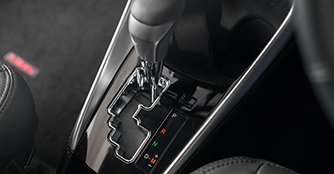
 Overdrive should be used to lower the engine rpm at high speeds, reducing wear and tear on the transmission
Overdrive should be used to lower the engine rpm at high speeds, reducing wear and tear on the transmission
However, different cars offer different features. For certain car makes and models, you will have to manually turn this overdrive feature on or off. But why should you use overdrive?
The reason is to obtain lower engine rpm while driving at high speed, reducing the wear and tear on the transmission. In turn, this also leads to better fuel economy.
4. Shift properly
Being disciplined in the way you shift between gears is also an important part of maintaining an automatic transmission. In fact, there is a right way (and thus a wrong way) to shift gears with an automatic transmission. You should always never shift to the 'Reverse' or 'Park' until the car comes to a complete stop. Also, always ensure that you fully depress the brake pedal when shifting from ‘Park’ to another gear.
*This article was updated on 31st May 2018.
It is wise to check the condition and the level of the transmission fluid on a regular basis. This way, you will know when it is time for a change.
Transmission fluid should be more of a red color than a dirty brown. You should heck your car owner's manual to determine the appropriate interval to change the transmission fluid. The general recommendation is to change the transmission fluid after approximately every 10,000km.
Also, be sure to use only the same type of the transmission fluid as specified in the owner's manual or on the dipstick. Ultimately, the cleaner the transmission, the smoother it will operate.
3. Remember that overdrive is there for a reason
When it comes to automatic transmission, there is always overdrive - which is the highest gear - in place. Under normal circumstances of driving, this is automatically selected by the car.

However, different cars offer different features. For certain car makes and models, you will have to manually turn this overdrive feature on or off. But why should you use overdrive?
The reason is to obtain lower engine rpm while driving at high speed, reducing the wear and tear on the transmission. In turn, this also leads to better fuel economy.
4. Shift properly
Being disciplined in the way you shift between gears is also an important part of maintaining an automatic transmission. In fact, there is a right way (and thus a wrong way) to shift gears with an automatic transmission. You should always never shift to the 'Reverse' or 'Park' until the car comes to a complete stop. Also, always ensure that you fully depress the brake pedal when shifting from ‘Park’ to another gear.
*This article was updated on 31st May 2018.
These days, automatic transmissions are everywhere. Most drivers choose an automatic transmission over a manual because of the convenience it affords. But does that mean that transmission gearboxes require little attention and care?
That’s far from true. In fact, the automatic transmission is one of the most complicated and thus one of the less reliable parts of the vehicle. The repair of an automatic transmission is complex, and this means it tends to be quite expensive as well. More than that, automatic transmission problems can make your car unsafe - some transmission defects may cause your car to roll even with the shifter in Park or drive forward with the shifter in Neutral.
However, your car's automatic transmission can last for a long tie if it is well taken care of. Therefore, it is important to learn about maintenance tips for your transmission as well as ways to spot any minor problems before major issues crop up, which may even result in the total breakdown of your vehicle.
What often damages automatic transmission?
Transmission complications often occur due to overheating. This is so because at a high temperatures, losing its lubricating qualities and becomes oxidized, leaving deposits all over inside the transmission. When exposed to the heat, the rubber seals and gaskets inside the transmission hardens, which will cause leaks. The metal parts warp and lose their strength. All this, sooner or later, results in transmission failure.
The cause of overheating here in Singapore can be due to a couple of things - insufficient coolant in the system, a defective water pump or a dirty and restricted radiator grille - so it's important to ensure you car is regularly and properly serviced. And with the extreme weather in Singapore, often slamming on the accelerator pedal isn't going to help. Revving up your engine rpm is something you should try and avoid as often as possible as it generates excessive amounts of heat.
Is overheating the one and only reason for damage?
No, it's not. There are times damage to transmission is caused by poor manufacturer design, lack of care, or repairs performed by untrained or inexperienced technicians.
So what should you do to avoid the damage?
1. Watch out for leakage
You should always check for any leakage under the car. Even though it is not necessarily leakage of the transmission fluid, you should consult a professionally trained technicians if you happen to discover any kind of leakage. It might point to anther problem with your vehicle. Keep in mind that any kind of leakage could be critical and endanger your life, as well as the lives of your passengers.
That’s far from true. In fact, the automatic transmission is one of the most complicated and thus one of the less reliable parts of the vehicle. The repair of an automatic transmission is complex, and this means it tends to be quite expensive as well. More than that, automatic transmission problems can make your car unsafe - some transmission defects may cause your car to roll even with the shifter in Park or drive forward with the shifter in Neutral.
However, your car's automatic transmission can last for a long tie if it is well taken care of. Therefore, it is important to learn about maintenance tips for your transmission as well as ways to spot any minor problems before major issues crop up, which may even result in the total breakdown of your vehicle.
What often damages automatic transmission?
Transmission complications often occur due to overheating. This is so because at a high temperatures, losing its lubricating qualities and becomes oxidized, leaving deposits all over inside the transmission. When exposed to the heat, the rubber seals and gaskets inside the transmission hardens, which will cause leaks. The metal parts warp and lose their strength. All this, sooner or later, results in transmission failure.
The cause of overheating here in Singapore can be due to a couple of things - insufficient coolant in the system, a defective water pump or a dirty and restricted radiator grille - so it's important to ensure you car is regularly and properly serviced. And with the extreme weather in Singapore, often slamming on the accelerator pedal isn't going to help. Revving up your engine rpm is something you should try and avoid as often as possible as it generates excessive amounts of heat.
Is overheating the one and only reason for damage?
No, it's not. There are times damage to transmission is caused by poor manufacturer design, lack of care, or repairs performed by untrained or inexperienced technicians.
So what should you do to avoid the damage?
1. Watch out for leakage
You should always check for any leakage under the car. Even though it is not necessarily leakage of the transmission fluid, you should consult a professionally trained technicians if you happen to discover any kind of leakage. It might point to anther problem with your vehicle. Keep in mind that any kind of leakage could be critical and endanger your life, as well as the lives of your passengers.
2. Consider changing transmission fluid
It is wise to check the condition and the level of the transmission fluid on a regular basis. This way, you will know when it is time for a change.
Transmission fluid should be more of a red color than a dirty brown. You should heck your car owner's manual to determine the appropriate interval to change the transmission fluid. The general recommendation is to change the transmission fluid after approximately every 10,000km.
Also, be sure to use only the same type of the transmission fluid as specified in the owner's manual or on the dipstick. Ultimately, the cleaner the transmission, the smoother it will operate.
3. Remember that overdrive is there for a reason
When it comes to automatic transmission, there is always overdrive - which is the highest gear - in place. Under normal circumstances of driving, this is automatically selected by the car.

 Overdrive should be used to lower the engine rpm at high speeds, reducing wear and tear on the transmissionHowever, different cars offer different features. For certain car makes and models, you will have to manually turn this overdrive feature on or off. But why should you use overdrive?
Overdrive should be used to lower the engine rpm at high speeds, reducing wear and tear on the transmissionHowever, different cars offer different features. For certain car makes and models, you will have to manually turn this overdrive feature on or off. But why should you use overdrive?
The reason is to obtain lower engine rpm while driving at high speed, reducing the wear and tear on the transmission. In turn, this also leads to better fuel economy.
4. Shift properly
Being disciplined in the way you shift between gears is also an important part of maintaining an automatic transmission. In fact, there is a right way (and thus a wrong way) to shift gears with an automatic transmission. You should always never shift to the 'Reverse' or 'Park' until the car comes to a complete stop. Also, always ensure that you fully depress the brake pedal when shifting from ‘Park’ to another gear.
*This article was updated on 31st May 2018.
It is wise to check the condition and the level of the transmission fluid on a regular basis. This way, you will know when it is time for a change.
Transmission fluid should be more of a red color than a dirty brown. You should heck your car owner's manual to determine the appropriate interval to change the transmission fluid. The general recommendation is to change the transmission fluid after approximately every 10,000km.
Also, be sure to use only the same type of the transmission fluid as specified in the owner's manual or on the dipstick. Ultimately, the cleaner the transmission, the smoother it will operate.
3. Remember that overdrive is there for a reason
When it comes to automatic transmission, there is always overdrive - which is the highest gear - in place. Under normal circumstances of driving, this is automatically selected by the car.

The reason is to obtain lower engine rpm while driving at high speed, reducing the wear and tear on the transmission. In turn, this also leads to better fuel economy.
4. Shift properly
Being disciplined in the way you shift between gears is also an important part of maintaining an automatic transmission. In fact, there is a right way (and thus a wrong way) to shift gears with an automatic transmission. You should always never shift to the 'Reverse' or 'Park' until the car comes to a complete stop. Also, always ensure that you fully depress the brake pedal when shifting from ‘Park’ to another gear.
*This article was updated on 31st May 2018.







